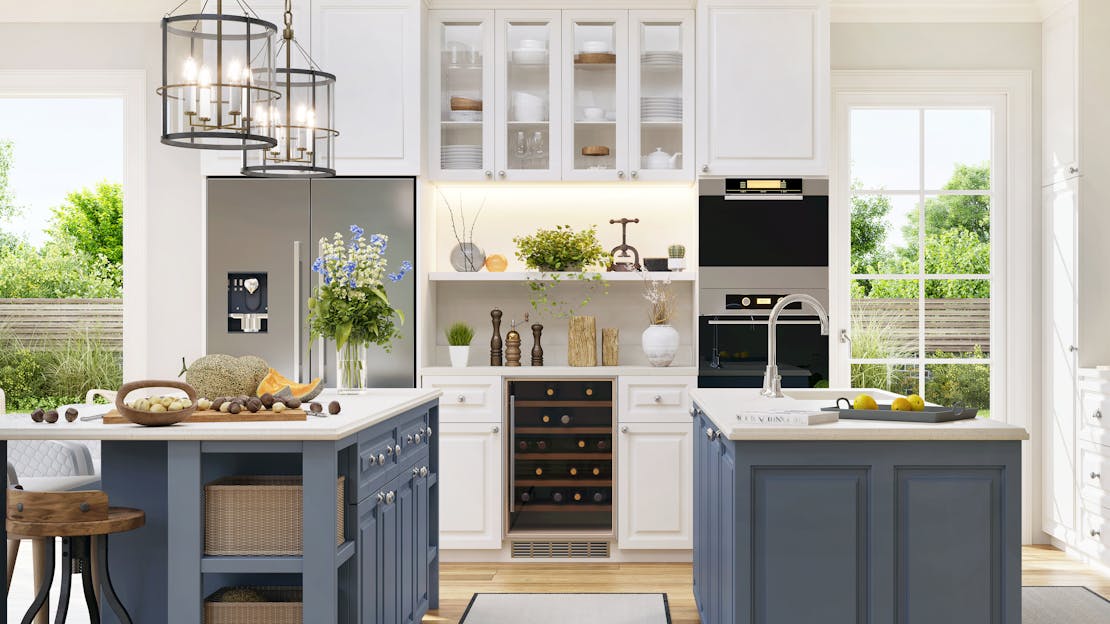
Can you mix kitchen appliance brands?
When planning a kitchen renovation, one common dilemma is choosing the right appliances. Whether upgrading your kitchen for better functionality or modernising its look, the question arises: should you stick with one brand for all your appliances, or can you mix and match? This article explores the pros and cons of both approaches, offering insights and tips to help you make the best decision for your kitchen.
The Case for Matching Kitchen Appliance Brands
Aesthetics
Matching kitchen appliances can create a uniform look and feel, contributing to a cohesive design. When all your appliances share the same brand, they typically feature similar finishes, handle designs, and control interfaces, making your kitchen look well-planned and stylish.
Brand Packages
Many manufacturers offer discounts and promotions when you purchase a full suite of appliances from the same brand. This not only simplifies the decision-making process but also can save you money. Instead of comparing numerous brands and models, you can choose a package deal that meets your needs.
Potential for Better Integration
Modern kitchens often incorporate smart technology, where appliances communicate with each other to enhance functionality. Using a single brand can ensure seamless integration, consistent user experiences, and interfaces. For example, a smart refrigerator might communicate with your oven to adjust cooking times based on stored food.
The Case for Mixing Kitchen Appliance Brands
Performance and Features
Mixing brands allows you to select the best-in-class appliances for each type. You might prefer a specific brand for its reliable dishwashers but another for its advanced cooking ranges. This approach ensures each appliance meets your specific cooking and usage needs.
Cost and Budget Considerations
Flexibility in budget allocation is another advantage. By mixing brands, you can prioritise spending on appliances you use most frequently while saving on others. This method also allows you to take advantage of individual sales and deals, rather than being limited to package deals.
Personal Preference and Lifestyle
Customising your kitchen based on your lifestyle and cooking habits is easier when you mix brands. For instance, if you bake often, investing in a top-of-the-line oven from one brand while choosing a more budget-friendly refrigerator from another can optimise your kitchen's performance.
Factors to Consider When Mixing Kitchen Appliance Brands
Design Compatibility
Ensuring that the finishes and styles of different brands match can be challenging but achievable. Stainless steel is a common finish that many brands offer, making it easier to mix without clashing. Pay attention to the size and proportion of each appliance to maintain a balanced look.
Functional Compatibility
It's essential to ensure your appliances complement each other in functionality. Check for potential issues with varying technologies and ensure they won't interfere with each other's performance. For example, some smart ovens and refrigerators may not sync if they use different communication protocols.
Brand Reputation and Reviews
Researching brand reliability is crucial. Look into customer reviews and professional ratings to ensure you're choosing reputable brands. Additionally, consider the customer service and warranty options for each brand to avoid future hassles.
Real-Life Examples and Case Studies
Successful Mixed Brand Kitchens
Many homeowners have successfully mixed brands in their kitchens. For example, one might use a Bosch dishwasher for its quiet operation, a Samsung refrigerator for its spacious design, and a KitchenAid range for its superior baking capabilities. These combinations can create a functional and aesthetically pleasing kitchen.
Challenges Faced
Some challenges include matching finishes and dealing with different control interfaces. However, solutions like choosing appliances with similar finishes and arranging them to minimise visual differences can mitigate these issues. User testimonials often highlight that the performance benefits outweigh these minor inconveniences.
Expert Opinions
Interviews with Interior Designers and Kitchen Experts
Interior designers often recommend mixing brands if it enhances functionality and meets the homeowner's specific needs. Experts suggest focusing on high-use appliances when mixing brands and ensuring a cohesive design by carefully selecting finishes and styles.
Appliance Manufacturer Perspectives
Manufacturers acknowledge the trend of mixing brands and increasingly design appliances with versatile aesthetics to accommodate this. Industry trends point towards greater compatibility and smart technology integration, making it easier to mix brands without sacrificing functionality.
Practical Tips for Mixing Kitchen Appliance Brands
Planning and Research
Create a wish list and prioritise your needs. Research and read reviews to identify the best appliances for each category. Compare features, prices, and customer feedback to make informed decisions.
Budgeting and Shopping
Set a realistic budget and look for sales and promotions. Mixing brands allows you to allocate funds wisely, ensuring you get the best value for your money.
Installation and Maintenance
Coordinate delivery and installation to avoid delays and ensure proper setup. Understand the maintenance requirements for each brand to keep your kitchen running smoothly.
Conclusion
Matching and mixing kitchen appliance brands each have their pros and cons. While matching offers a cohesive look and potential cost savings through package deals, mixing allows for customised performance and budget flexibility. Ultimately, the decision depends on your individual needs, preferences, and lifestyle. By carefully considering design and functional compatibility, researching brand reputations, and planning your purchases, you can create a kitchen that is both beautiful and highly functional.
Top Selling Appliances from MyAppliances
Explore our top selling kitchen appliances, where quality meets affordability. From stylish ovens to efficient hobs and powerful cooker hoods, we offer a range of products designed to enhance your culinary experience. Discover our selection today to find the perfect fit for your kitchen and cooking requirements.
